Explore the Exciting Baking Soda and Vinegar Experiment
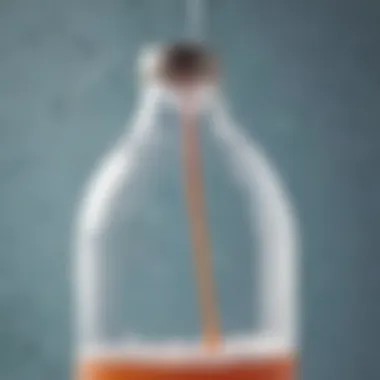
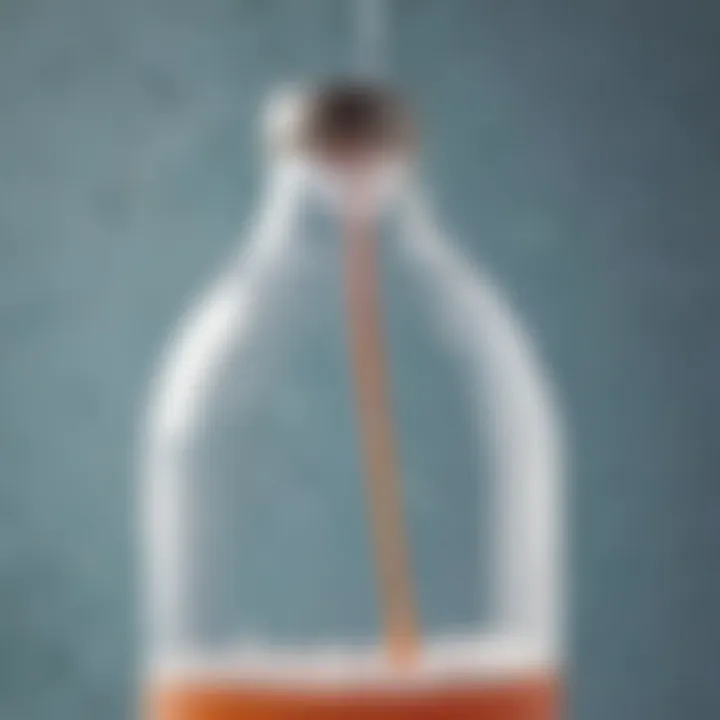
Intro
The experiment involving baking soda and vinegar is a fascinating activity that captures the essence of scientific exploration. It serves as an excellent introduction to chemistry, particularly for children. The simplicity of the materials—baking soda, vinegar, and a balloon—combined with the immediate visual results, makes it particularly engaging. This experiment aligns with educational goals by creating an environment where young learners can discover scientific principles through hands-on experience.
Science Fun Facts
Understanding the baking soda and vinegar reaction can be enhanced by some fun facts surrounding it:
- Basic Chemistry: Baking soda, also known as sodium bicarbonate, is a basic compound. Vinegar contains acetic acid, which is acidic. When the two mix, a chemical reaction occurs, releasing carbon dioxide gas.
- Historical Use: The chemical reaction of acids and bases has been understood since ancient times. Ancient Egyptians are believed to have used basic and acidic materials in various applications.
- Bubbling Active Ingredient: The bubbles you see during the experiment are carbon dioxide gas escaping from the mixture. This gas is what inflates the balloon.
- Fun with Numbers: The reaction ratio of baking soda to vinegar does not need to follow exact measurements for a successful outcome. Experimenting with different amounts can yield varied balloon sizes.
Discover the Wonders of Science
This experiment does not only illustrate a simple reaction. It opens a doorway to various scientific concepts:
- Acid-Base Reactions: This experiment is a perfect demonstration of how acids and bases interact.
- Pressure and Gas Expansion: Observing how gas fills the balloon offers insights into gas properties.
- Real-Life Applications: Understanding reactions can be useful in everyday life, including cooking, cleaning, and even in biology.
Interactive Learning Tools
Engaging with scientific concepts is made easier with resources such as:
- YouTube Educational Videos: There is an array of science channels that showcase similar experiments. These videos can help visualize the reaction and inspire further experiments.
- Hands-on Science Kits: Numerous educational kits offer safe, guided experiments to allow deeper exploration of scientific concepts.
Science Experiment Showcase
This section presents the precise details necessary for conducting the baking soda and vinegar balloon experiment effectively.
- Materials List:
- Step-by-Step Instructions:
- Safety Tips and Precautions:
- Baking soda
- Vinegar
- A balloon
- A plastic bottle or a small container
- Funnel (optional)
- Pour some vinegar into the bottle, filling it about one-third full.
- Using a funnel, add baking soda into the balloon without letting it fall into the vinegar yet.
- Carefully place the open end of the balloon over the mouth of the bottle, ensuring it does not spill the baking soda.
- Once everything is secure, lift the balloon allowing the baking soda to fall into the vinegar.
- Watch as the chemical reaction begins! The balloon will start to inflate as carbon dioxide is produced.
- Ensure to conduct the experiment in a well-ventilated area.
- Do not ingest baking soda or vinegar in large amounts. They are safe but should be used properly.
- Always supervise children during the experiment to assist them if needed.
Science Quiz Time
Testing knowledge can be fun! After conducting the experiment, consider a few questions to stimulate thinking:
- What gas is produced during the reaction?
- What happens to the balloon when the reaction occurs?
- Why is it important to supervise children during experiments?
- How might changing the amounts of baking soda or vinegar affect the outcome?
Through this simple yet effective experiment, children can ignite their passion for science, fostering skills like critical thinking and experimentation. Diving into such an engaging activity allows learning to flourish under the guise of fun exploration.
Preamble to the Experiment
The baking soda and vinegar balloon experiment serves as an engaging entry point into the world of science for young learners. It combines simple household items to produce fascinating results, specifically the inflation of a balloon. This experiment goes beyond mere spectacle; it provides valuable insights into fundamental concepts in chemistry, particularly chemical reactions and the nature of gases. Understanding the processes at play can foster curiosity and promote scientific literacy in children.
When children participate in the baking soda and vinegar experiment, they engage in hands-on learning. This method of interaction helps instill a sense of accomplishment. Moreover, the straightforward materials required make it accessible to families and educators, regardless of background or resources. Parents and caregivers can easily replicate this experiment at home, creating opportunities for bonding and shared learning experiences.
Purpose of the Experiment
The primary purpose of this experiment is to illustrate the principles of chemical reactions in a way that is clear and tangible for children. In a controlled setting, they can observe firsthand how the interaction between an acid and a base produces carbon dioxide gas. This gas is responsible for the inflation of the balloon, providing a visible demonstration of the concepts being studied.
Furthermore, this experiment encourages critical thinking. Children can hypothesize about the outcomes, make predictions, and analyze the results afterward. This cyclical process of inquiry and reflection promotes a deeper understanding of scientific methods, enhancing their overall educational experience. The simplicity of the materials involved does not undermine the complexity of the scientific principles being illustrated; instead, it creates a perfect balance that keeps young minds engaged.
Scientific Principles
Understanding the scientific principles behind the baking soda and vinegar balloon experiment is crucial for comprehending the reaction that drives this fun activity. Engaging with these principles provides a foundation for observing how substances interact and transform. The experiment offers a visual representation of chemical reactions, allowing young learners to connect theory and practice in a tangible way.
Chemical Reactions Explained
A chemical reaction occurs when two or more substances combine to form new substances. In this experiment, the key players are baking soda (sodium bicarbonate) and vinegar (acetic acid). When mixed, they engage in a reaction that releases carbon dioxide gas. This process illustrates how substances can change their state and create something entirely different.
During the reaction, the production of carbon dioxide gas is not only fundamental to creating the balloon's inflation, but it is also a visible representation of the reaction taking place. Young participants can observe bubbles and fizzing as the gas builds up. This not only keeps the experiment engaging but also highlights the concept of gas formation during chemical reactions.
Acid-Base Reactions
Baking soda is classified as a base, while vinegar is an acid. When an acid and a base react, they typically neutralize each other, producing a salt and water. In this case, however, the byproduct is primarily carbon dioxide gas. This interaction lays the foundation of understanding acids and bases and their role in everyday chemistry.
The reaction can be summarized in the following equation:
[ \textNaHCO_3 + \textCH_3\textCOOH \rightarrow \textCH_3\textCOONa + \textH_2\textO + \textCO_2 \uparrow ]
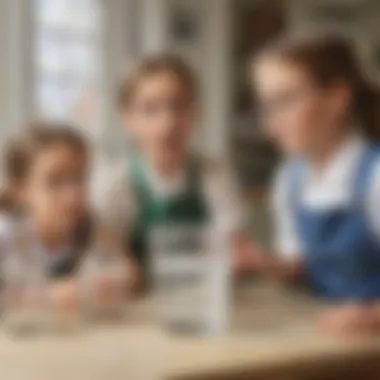
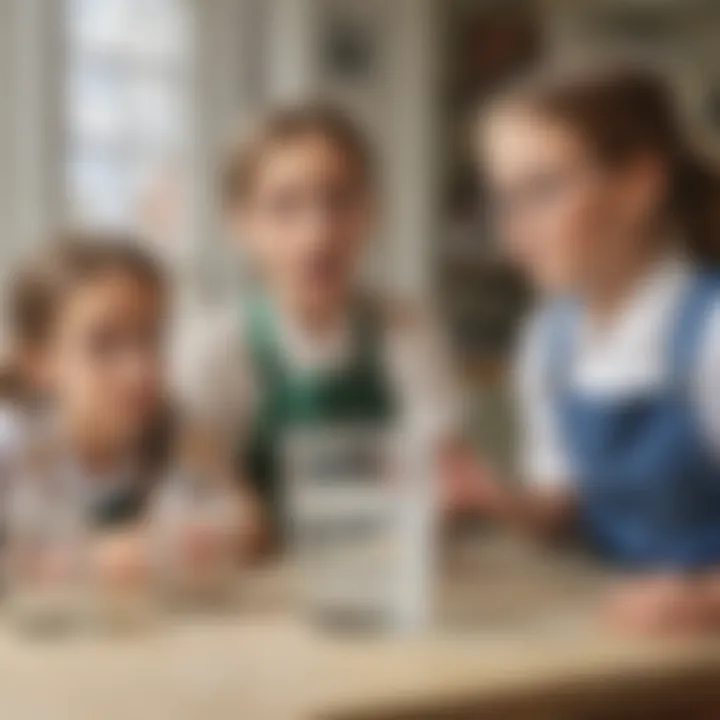
Through this experiment, children learn that reactions can produce gases. This knowledge is essential as it fosters curiosity about how different materials interact, not just in a lab but also in daily life. Understanding acid-base reactions is beneficial for recognizing different substances, cooking, and more.
"The baking soda and vinegar balloon experiment serves as a delightful introduction to chemical reactions, sparking curiosity in young learners."
By grasping the core concepts of chemical reactions and acid-base interactions, children can cultivate a lifelong interest in science. This groundwork prepares them for more complex chemistry concepts in the future, making learning approachable and fun.
Materials Needed
Understanding the materials needed for the baking soda and vinegar balloon experiment is crucial. This section highlights the essential elements required for the setup. By gathering the right materials, one ensures the experiment runs smoothly, leading to successful outcomes. Moreover, knowing the benefits and considerations related to these materials can prepare participants for any challenges.
Primary Ingredients
The primary ingredients for this experiment are baking soda and vinegar. Each ingredient serves a specific purpose in the chemical reaction.
- Baking Soda (Sodium Bicarbonate): This is a white powder that serves as the base reactant in the experiment. When combined with vinegar, it will create carbon dioxide gas.
- Vinegar (Acetic Acid): Vinegar is a common kitchen item, made primarily of acetic acid and water. It provides the acidic environment needed to react with baking soda.
These two ingredients are easily accessible and typically safe for children. Ensuring that they are fresh and uncontaminated is important for optimal results. If either ingredient is old or not stored properly, the expected reaction may not occur.
Additional Equipment
In addition to the primary ingredients, some additional items are necessary to conduct this experiment effectively.
- Balloon: A standard latex balloon is essential for capturing the carbon dioxide gas produced during the reaction. The balloon will inflate as gas accumulates.
- Plastic Bottle: A clear plastic bottle will serve as a containment vessel for the reaction. This allows for easy observation of the experiment.
- Funnel: A funnel will aid in transferring baking soda into the bottle without spilling. This ensures cleanliness and accuracy.
- Measuring Spoons: Using measuring spoons is important to accurately measure the amounts of baking soda and vinegar.
While these items can be simple household objects, their role cannot be understated. Proper tools will make the experiment more instructive and enjoyable for participants.
Preparation Steps
Properly preparing for the baking soda and vinegar balloon experiment is essential to its success. Preparation not only affects the functionality of the experiment but also enhances the learning experience. By being aware of all required materials and understanding the process, participants can engage more deeply with the content.
The steps taken before executing the experiment set the groundwork for a smooth experience. An organized approach mitigates the chance of errors or surprises. Good preparation ensures that the focus remains on the science rather than the logistics. It also allows for the exploration of underlying scientific principles, further enriching the educational experience.
Setting Up the Experiment
Setting up the experiment involves gathering all necessary materials and organizing them effectively. Start by selecting a clean, flat surface where the activity can take place. This helps in managing spills or messes, which can occur during the reaction.
Materials Needed
- Baking soda: A common household item that acts as a base.
- Vinegar: An acidic liquid that reacts with baking soda.
- Balloon: Attached securely to a bottle to capture gas.
- Empty plastic bottle: This will contain the vinegar and baking soda.
- Funnel: Useful for pouring the baking soda into the bottle without spills.
- Measuring spoons: To ensure accurate measurements.
Steps to Set Up
- Gather all materials before starting. Keep them within arm's reach.
- Choose the right balloon size. A larger balloon will demonstrate more expansion from the gas created.
- Prepare the plastic bottle by adding vinegar first—this allows the baking soda to react with it effectively.
- Use the funnel to add the baking soda to the balloon. Be precise with the amount to ensure optimal reaction.
- Attach the balloon to the mouth of the bottle after the baking soda is in place. Make sure it hangs without spilling into the vinegar yet.
By following these foundational steps, you set the stage for the experiment to unfold smoothly. Additionally, this careful setup facilitates focus on the scientific concepts at work.
Executing the Experiment
Executing the experiment successfully is a critical step in ensuring the objectives of the baking soda and vinegar balloon demonstration are met. This section highlights the importance of following outlined procedures, as it maximizes the potential for successful outcomes while minimizing common issues. It is essential for participants to understand the mechanics at play in order to engage meaningfully with the scientific principles involved.
The benefits of executing the experiment correctly include fostering curiosity and promoting comprehension of acid-base reactions. Engaging with scientific principles firsthand enriches learning experiences for elementary school children and sustains their interest in science.
To prepare for execution, participants need to gather all necessary materials and follow the steps attentively. Doing so not only yields observable results but also encourages teamwork and problem-solving skills among children, making the experience enjoyable and educational. This aspect of collaboration can enhance communication skills and reinforce scientific reasoning.
Step-by-Step Instructions
- Gather Your Materials: Start by collecting the needed items for the experiment, including a balloon, a funnel, baking soda, vinegar, and a bottle for mixing. Ensure everything is available before proceeding to avoid interruptions.
- Fill the Bottle: Pour approximately one-third of a cup of vinegar into the bottle. The amount of vinegar affects the reaction, so being precise is important for predictable results.
- Prepare the Balloon: Use the funnel to add about two tablespoons of baking soda into the balloon. It helps to stretch the balloon a little to make it easier to fit the funnel.
- Attach the Balloon: Carefully place the opened end of the balloon over the top of the bottle but do not let the baking soda fall in yet. Holding the balloon from the outside prevents any premature reactions. This step requires a steady hand.
- Mix the Ingredients: Once the balloon is secured and in place, tilt the balloon so that the baking soda pours into the vinegar. This action will initiate the reaction that produces carbon dioxide gas.
- Observe the Reaction: Watch as the balloon inflates. This is due to the gas produced from the chemical reaction. Take note of how quickly the balloon fills, and any other interesting observations during this process.
- Safety First: After the reaction, carefully remove the balloon from the bottle. Dispose of the contents safely and properly. Ensure to clean the workspace afterward to maintain safety standards.
Important Note: Always supervise children during the experiment to guide them and answer any queries.
This structured approach not only leads to a successful outcome but also reinforces key scientific concepts while encouraging youth engagement in experimentation. Observe and discuss outcomes along the way to enrich understanding.
Observations and Results
In this section, we will examine the observations and results that can be drawn from the baking soda and vinegar balloon experiment. Recording these observations is essential as it aids understanding of the chemical reactions taking place during the experiment. Not only does it help in grasping scientific concepts, but it also enhances critical thinking and creativity among young learners.
When conducting this experiment, it’s important to be alert to several key elements. The primary focus is how the gas produced affects the balloon's inflation. Observing this can create excitement and anticipation. You may find that the balloon expands at different rates based on factors such as the amounts of baking soda and vinegar used. Tracking these variations can lead to discussions about gas production and the reaction’s intensity.
What to Look For
While performing the experiment, there are specific aspects to pay attention to:
- Balloon Inflation: Watch how quickly the balloon inflates. Does it take long, or does it happen rapidly? This can indicate the speed of the chemical reaction.
- Sound Emissions: Listen for any sounds that occur when the vinegar and baking soda mix. Bubbling or fizzing noises are a good sign of gas release.
- Color Changes: Although the chemicals involved are relatively clear, any changes in the liquid's appearance may signal a significant reaction.
- Temperature Variations: Touch the container holding the mixture and see if it feels warmer or cooler, as some reactions release or absorb heat.
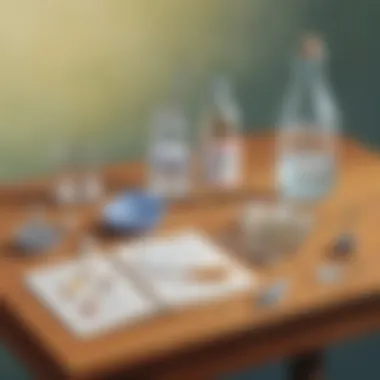
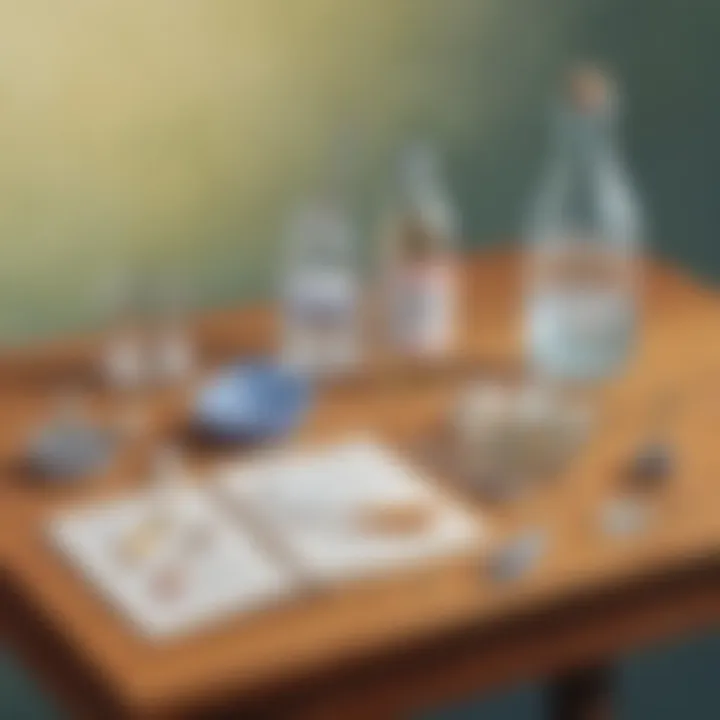
Analyzing the Results
Upon completing the experiment, it’s crucial to analyze the results. Begin by cataloging your observations. Ask questions such as:
- Did the balloon inflate as expected?
- How did the amount of baking soda and vinegar influence the outcome?
- Were there unexpected results, and what might have caused those?
This analysis allows participants to draw connections between theoretical knowledge and practical results. For instance, understanding why the vinegar reacts with baking soda provides insight into acid-base reactions. Additional discussions can revolve around the properties of carbon dioxide gas, which is what fills the balloon.
Recording these observations and analyzing them fosters a deeper understanding of science. It might include encouraging young participants to write down their findings, creating a small science journal.
In summary, the observations and results in this experiment serve significant educational purposes. They help in understanding reactions and fuel curiosity. Young learners gain a hands-on experience that supplements their classroom knowledge.
Safety Considerations
Safety is a crucial aspect of conducting any experiment, particularly when involving children, who may not fully grasp the implications of unsafe practices. In the case of the baking soda and vinegar balloon experiment, understanding safety considerations ensures a pleasant and educational experience. The reactions involved are simple and non-toxic, but attention must be paid to certain elements to prevent accidents and uphold a safe environment.
Considering the potential for spills and the pressure generated from the reaction is important. While the materials used are largely benign, children should never ingest them. Moreover, the balloon can burst due to over-expansion, which could startle participants. Always have a supervisor or adult present during the experiment to monitor and assist as necessary, particularly for younger children.
"Safety first, always. Ensuring a controlled environment allows the experiment to be both fun and educational."
Mutual respect for safety guidelines enhances the educational experience. Stressing these practices fosters responsibility and awareness among young learners. Providing an understanding of why safety matters will not only serve them during this experiment but in future endeavors. Remember, the goal is to explore scientific principles without compromising health or wellbeing.
Important Safety Tips
To ensure a safe and enjoyable experience with the baking soda and vinegar balloon experiment, consider implementing the following important tips:
- Supervision Required: Always have an adult present to supervise the activity.
- Read the Labels: Ensure that the baking soda and vinegar used are food-grade and safe for children.
- Wear Protective Gear: Even though it isn’t mandatory, wearing safety goggles can protect the eyes, especially if children are mixing ingredients.
- Conduct in a Controlled Environment: Set up the experiment in an area that is easy to clean, such as a kitchen or a space covered with newspaper or plastic.
- Use Appropriate Quantities: Measure the ingredients carefully to avoid excessive pressure build-up in the balloon.
- Immediate Clean-Up: After the experiment, all materials should be cleaned up right away to prevent slips and trips.
By carefully following these safety tips, the experiment can be a wonderful opportunity for learning and creativity.
Troubleshooting Common Issues
Addressing problems that may arise during the baking soda and vinegar balloon experiment is crucial for ensuring a successful outcome. Common issues can disrupt the flow of the experiment and lead to frustration.
By identifying these potential problems ahead of time, participants can manage their expectations and understand how to troubleshoot effectively. Successfully resolving these issues enhances the learning experience and fosters a sense of accomplishment among young experimenters.
In the following sections, we discuss common pitfalls and offer practical solutions to help navigate any challenges that come up while conducting the experiment.
Potential Problems and Solutions
- Balloon Doesn’t Inflate
This issue may occur if the reaction between the baking soda and vinegar does not produce enough carbon dioxide. Reasons for insufficient gas include:Solution: Ensure the proper ratio, typically about one tablespoon of baking soda to half a cup of vinegar. Use fresh ingredients for optimal results. - Balloon Pops During Inflation
A balloon may burst if it is overstretched or if too much pressure builds up quickly.Solution: Select sturdy balloons designed for science experiments. Slowly combine the ingredients to control the inflation process. - Reaction is Weak
If the reaction seems lackluster, it may not build up enough gas to inflate the balloon effectively.Solution: Ensure that ingredients are at room temperature. A warmer setting helps enhance reaction speed. - Messy Outcome
Some messiness is expected, but excessive splattering can be a problem.Solution: Use a funnel to direct the vinegar into the bottle and control the amount used. - Balloon Suffers Deflation
If the balloon deflates too quickly, it can be due to a poorly sealed opening.Solution: Check the sealing of the balloon before starting. Make sure there are no holes and that it is tied well.
- Improper Ratio: Using too much vinegar relative to baking soda can dilute the reaction.
- Old Ingredients: Baking soda and vinegar should be fresh. Expired or improperly stored ingredients lose effectiveness.
- Using Thin Balloons: Some balloons are too thin and cannot withstand the pressure.
- Temperature: Conducting the experiment in a cold environment can slow down the reaction.
- Too Much Vinegar: Pouring too much vinegar causes it to overflow and may lead to a distraction during the experiment.
- Incorrect Closure: The balloon may not be tied securely enough or has small holes.
Extensions and Variations
Understanding the Extensions and Variations of the baking soda and vinegar balloon experiment opens avenues for deeper learning and engagement. This section discusses several ways to adapt and expand the experiment. By exploring these variations, educators and parents can enhance the educational experience, catering to different interests and learning paces of children. Incorporating extensions allows participants to grasp complex scientific concepts while enjoying a hands-on approach.
Advanced Experiment Ideas
To offer a more comprehensive understanding of chemical reactions, consider these advanced experiment ideas:
- Changing Ratios: Experiment with different amounts of baking soda and vinegar. This not only affects the size of the balloon but also highlights stoichiometry concepts. Document how changing ratios changes the reaction outcome.
- Temperature Effects: Conduct the experiment at various temperatures. Children can observe how warming or cooling the reactants impacts the rate of the reaction. Use thermometers to measure and record temperatures.
- Pressure Measurements: Introduce a pressure gauge to measure the gas production quantitatively. This can lead to discussions on gas laws and pressure concepts.
- Different Balloon Materials: Conduct trials comparing standard balloons with other materials, like latex or thicker plastic. Observe any differences in inflation rates and deduce why these differences occur based on material properties.
Each of these ideas deepens understanding of material science and reaction kinetics, providing a richer educational framework.
Fun Variations to Try
Fun variations can enhance the excitement of the experiment. They allow children to personally engage with the science. Some ideas include:
- Balloon Colors: Use colored soda or vinegar to see if it changes the balloon’s color. This adds a visual element and keeps children interested.
- Inflatable Creations: Instead of just inflating a balloon, consider crafting different shapes or structures that require more balloons. Measure how many balloons can be inflated using a set amount of reactants.
- Incorporating Art: Allow children to paint or decorate the balloons before launching the experiment. This could spark creativity while linking art with science.
- Racing Balloons: Set up a competition to see whose balloon expands the fastest based on their experiment adjustments. This adds an element of fun and playful competition to learning.
In summary, extensions and variations offer excellent opportunities for deeper learning and sustained interest. They engage children with new ideas while reinforcing the scientific principles demonstrated in the baking soda and vinegar experiment.
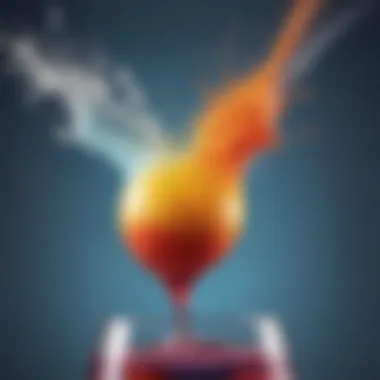
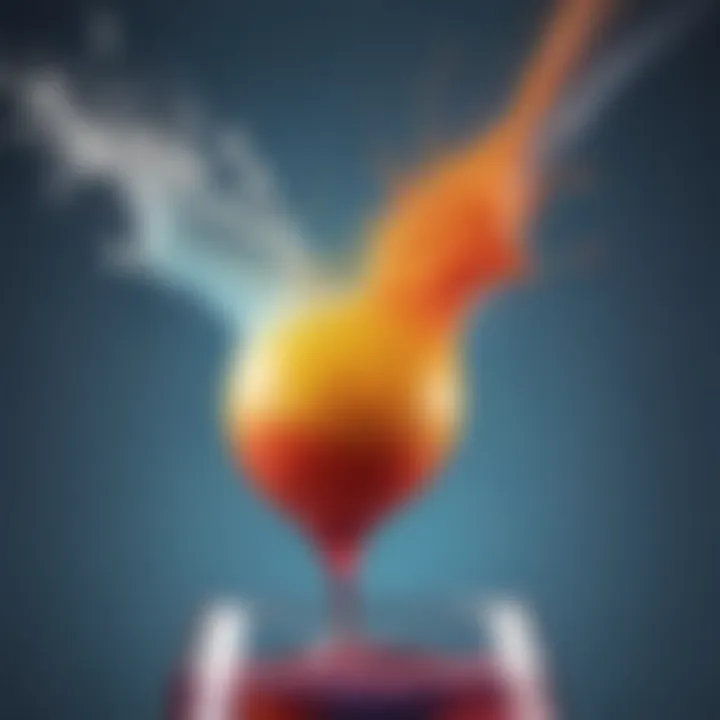
Learning Outcomes
The baking soda and vinegar balloon experiment serves several educational purposes, particularly in how it conveys fundamental scientific concepts. Understanding the learning outcomes of this activity enhances its value not only as a demonstration but also as a rich educational tool for children, parents, and educators.
This experiment introduces young learners to basic principles of chemistry, including definitions of reactants and products. Observing gas release and balloon inflation illustrates key concepts in chemical reactions and the nature of gases. Moreover, the simplicity of the materials involved allows students to focus on the scientific inquiry rather than complex procedures or expensive equipment. As such, this hands-on activity fosters a spirit of exploration and curiosity in young minds.
By engaging with this experiment, children also gain various skills, such as critical thinking and observation skills. As they predict the outcome, measure ingredients, and analyze results, they engage in scientific practices that are relevant across broader contexts. Hence, the overall importance of these learning outcomes cannot be understated and lays a solid foundation for future scientific learning.
Key Concepts to Understand
When conducting the baking soda and vinegar balloon experiment, there are several key concepts that serve as the backbone of the learning experience:
- Chemical Reaction: The interaction between baking soda, a base, and vinegar, an acid, leads to a chemical reaction producing carbon dioxide gas.
- Gas Production: Observing the production of gas is crucial as it illustrates how chemical changes can create new substances.
- Pressure and Volume: The inflation of the balloon showcases the relationship between the volume of gas produced and the pressure exerted within a contained space.
Understanding these concepts not only enhances the educational value of the experiment but also helps children grasp foundational scientific principles. They learn that even simple materials can create exciting reactions, inviting them to explore further.
"Science is not only a disciple of reason but, also, one of romance and passion." – Stephen Hawking
This experience serves as a stepping stone, encouraging further exploration into the realms of chemistry and physics related to gas laws and reactions. Ultimately, the experiment becomes more than just a fun activity—it transforms into a robust educational opportunity.
Discussion Points
Understanding the significance of discussing the baking soda and vinegar balloon experiment is crucial for educators and parents alike. This experiment serves not only as a practical demonstration of basic scientific principles but also encourages engagement at multiple levels among children.
Engaging with the Science
Engaging with the science behind this experiment allows children to grasp fundamental concepts such as chemical reactions and gas production. When baking soda, a base, comes into contact with vinegar, an acid, a reaction occurs that produces carbon dioxide gas. This is visible as the inflation of the balloon, providing an immediate visual representation of the reaction's outcome. The excitement and the anticipation of seeing the balloon inflate promote a deeper interest in the science fields.
This experiment encourages critical thinking and inquiry-based learning. Children can consider questions like: Why does the balloon inflate? or What happens if we change the amounts of baking soda or vinegar? Such questions compel them to think beyond the prescribed tasks, analyzing how different variables affect the outcome.
Moreover, successful completion of the experiment builds confidence in young scientists, allowing them to experience the joy of discovery and the fulfillment that comes from conducting an experiment. It is also a collaborative activity, making it great for group work and fostering teamwork skills.
Through this exploration, children not only learn about chemical properties, but they also develop essential skills, such as patience, attention to detail, and the ability to follow instructions. These skills transfer to other learning areas, enriching their overall educational experience.
Thus, discussing these aspects helps parents and educators recognize the broader implications of seemingly simple experiments, highlighting how they contribute to a child’s intellectual and social development.
Closure
In summation, the baking soda and vinegar balloon experiment serves as an effective educational tool that encapsulates fundamental principles of chemistry in a hands-on way. The importance of this experiment can be observed through various elements that engage children and foster a deeper understanding of scientific concepts.
Recap of the Experiment
The experiment primarily involves combining baking soda, a base, and vinegar, an acid. When these two ingredients react, they produce carbon dioxide gas. This gas inflates a balloon attached to the container, allowing children to visually see the reaction in action. This simple yet compelling experiment not only illustrates the basic principles of acid-base reactions but also emphasizes observation and analysis, which are key components of scientific inquiry.
Benefits of the Experiment:
- Engagement: Captures the interest of students by providing a visually stimulating outcome.
- Experiential Learning: Encourages hands-on participation, which is often more impactful than theoretical lessons alone.
- Develops Critical Thinking: Children are prompted to ask questions and predict outcomes, nurturing their natural curiosity.
Additionally, performing this experiment helps emphasize the importance of safety in science, as children learn to respect chemical reactions while having fun with their experiments. Caregivers can use this opportunity to teach valuable lessons about scientific methodology, fostering skills that extend beyond the classroom.
By integrating this activity into educational curricula, parents and educators can enhance understanding and appreciation of science among the younger generation. It illustrates that learning can be enjoyable, exciting, and rewarding.
Resources for Further Learning
In any scientific endeavor, having access to appropriate resources can greatly enhance understanding and provide additional insights. This is especially crucial for engaging young minds in experiments like the baking soda and vinegar balloon activity. Resources for further learning serve as essential tools, offering depth, a broader perspective, and relevance for both kids and adults involved. They can foster an atmosphere of inquiry and excitement around science, turning simple experiments into comprehensive learning experiences.
Having a variety of resources ensures that children and caregivers can explore topics related to chemical reactions, explore scientific concepts in more detail, and even connect with other science enthusiasts. Learning does not have to stop after performing the experiment; it can expand into various avenues of research and discovery.
Books and Articles
Books and articles present structured and tested information that can deepen understanding of scientific principles. There are numerous publications dedicated to kid-friendly science experiments, teaching methods, and fundamental science topics. Some recommended titles include:
- The Science Book for Kids by Cathy Johnson
- Why Does Popcorn Pop? And Other Questions About the Science of Food by George E. Stanley
- Science Experiments You Can Eat by Anita Sanchez
These books promote not only the theoretical side of science but also practical knowledge, allowing readers to perform more experiments related to chemical reactions. Articles from reliable sources, such as the Encyclopedia Britannica or educational blogs, offer current information about science experiments and their significance.
Online Resources
Online platforms present an extensive range of information and interactive content that can complement the baking soda and vinegar balloon experiment. Websites such as Wikipedia provide detailed entries on broader topics like chemistry and physics, which can help examine the principles behind the experiment.
Additionally, various educational websites focus on science experiments, offering step-by-step guides, troubleshooting tips, and variations on experiments. Here are a few notable ones:
Social media platforms can also be valuable. For example, Reddit hosts vibrant communities focused on science education, where parents and educators can share their experiences and tips.
"Engaging with these resources fosters curiosity and can lead to more enriching experiences. The neatly presented experiments can inspire creativity and innovation within the young minds."
Overall, exploring these resources can broaden the scope of learning, making science far more accessible and enjoyable. Encouraging children to utilize these materials fosters a habit of exploration and inquiry, significant elements in the pursuit of knowledge.







